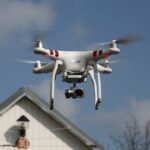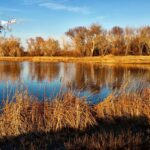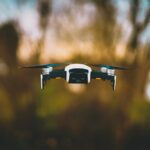With the rising popularity of drones for recreational and commercial use, it’s more important than ever for drone pilots to adhere to safety regulations, particularly when it comes to navigating no-fly zones. No-fly zones are designated areas where drones are not allowed to operate due to safety and security reasons. Violating these restrictions can have serious consequences, including fines, legal action, and in some cases, even endangering lives.
Here are some important safety tips for drone pilots to navigate no-fly zones effectively:
1. Know the Regulations: Before takeoff, it’s crucial to research and understand the regulations and restrictions in the area where you plan to fly your drone. No-fly zones can include airports, military bases, national parks, and other sensitive areas. Familiarize yourself with the rules and guidelines set by the Federal Aviation Administration (FAA) or relevant aviation authority in your country.
2. Use a Drone-Legal Map: Utilize a drone-legal map or an app that indicates no-fly zones in your area. These tools will help you identify restricted areas and avoid flying your drone in places where it is not permitted. It’s also a good practice to check for any temporary flight restrictions (TFRs) that may be in place due to events or emergencies.
3. Respect the Boundaries: It’s essential to respect the boundaries of no-fly zones and adhere to the restrictions at all times. Flying a drone in prohibited areas can pose risks to manned aircraft, wildlife, and property, as well as violate privacy rights. Be mindful of the potential impact of your actions and follow the rules to ensure safety for yourself and others.
4. Stay Informed: Stay informed about changes to airspace regulations and updates to no-fly zones in your vicinity. Subscribe to alerts or notifications from the FAA or relevant authorities to stay updated on any new restrictions or temporary closures that may affect your drone operations.
5. Plan Ahead: Plan your flights in advance and choose safe and legal locations to operate your drone. Avoid flying near airports, helipads, or other high-traffic areas where drones are prohibited. Always have a backup location in mind in case your original plan falls within a no-fly zone.
6. Maintain Line of Sight: When flying your drone, always maintain visual line of sight with the aircraft and stay within the designated altitude and distance limits. Avoid flying at night or in adverse weather conditions that could compromise your ability to see and control the drone, especially in restricted areas.
By following these safety tips and being a responsible drone pilot, you can navigate no-fly zones effectively and minimize the risks associated with unauthorized drone operations. Remember that safety should always be a top priority when flying drones, and compliance with regulations is essential to ensure the continued enjoyment and advancement of this exciting technology.





